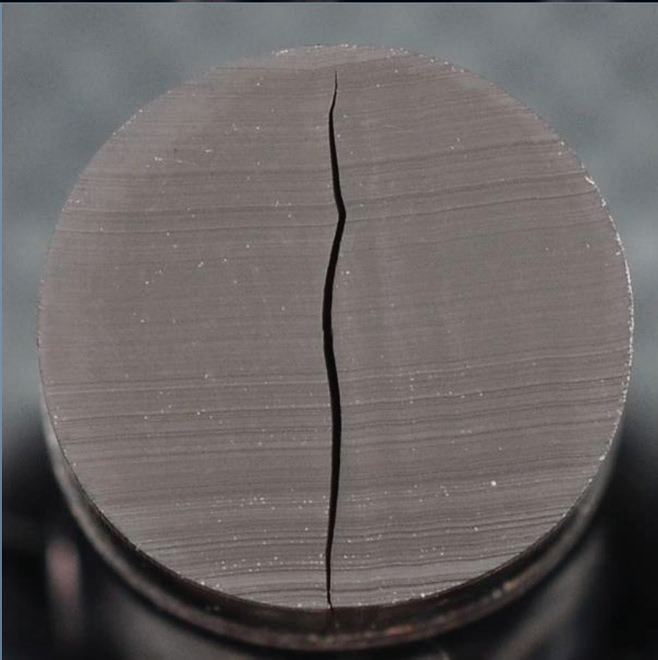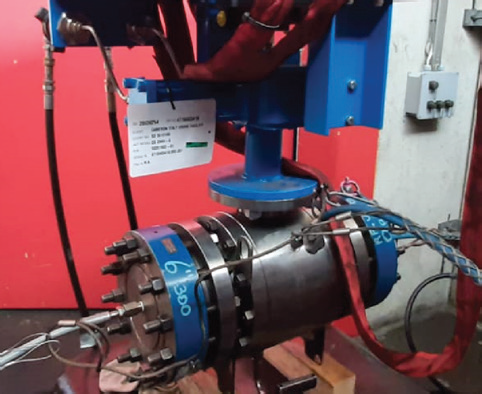With the current focus on creating an ecologically sound planet and decarbonization, hydrogen is getting tremendous attention as a solution to meet the world’s energy needs. Significant quantities of hydrogen are expected to be used as a means to decarbonize heating and other industrial applications, decrease power plant emissions, and provide the possibility of transporting and storing excess energy generated through renewable sources. If one adds to that the ever-increasing global need for energy, it becomes easy to understand how the expected increase in demand that some sources report will be as much as 10-fold between 2019 and 2050. The problem, however, is that hydrogen is not an easy gas to handle, and it introduces some safety concerns.
By Matthew Doherty, Senior Transition Technologies Engineer, Valves Business Line, and Jonathan Geleijns, Energy Transition Technologies Manager, Valves Business Line – SLB
It is important to understand the challenges that hydrogen gas brings to valves, and more specifically to transmission pipeline valves, in comparison to natural gas. While operators have significant experience with pipeline valves for natural gas, their experience is much more limited for valves used for transporting hydrogen. Although pipelines for pure hydrogen gas have been in service for many years, this type of pipeline has not been used in the sizes, pressure classes, and quantities that the industry is expecting will be required in the near future.
To better understand these challenges, one first needs to analyze the physical differences between hydrogen gas and natural gas. Once the differences have been established, it is important to discuss how hydrogen’s unique characteristics present challenges for valves, and the possible solutions to overcome these hurdles.
Hydrogen vs Natural Gas: Benefits and Drawbacks
Hydrogen has several characteristics that present more challenges for valves than the use of other gases do. The radius of a hydrogen gas molecule, at approximately 74 pm is much smaller compared to that of a methane molecule, at approximately 380 pm. The small size of hydrogen gas molecules enables them to permeate the elastomer and thermoplastic materials traditionally used in valves. The viscosity of hydrogen gas is also low compared to that of other gases, at 0.009 cP at standard temperature. This, in combination with hydrogen molecules’ small size, leads to sealing challenges in valves. Additionally, when hydrogen molecules dissociate into free hydrogen atoms, the atoms are small enough to diffuse into metallic materials, which can lead to a deterioration of mechanical properties known as hydrogen embrittlement.
Another difference between hydrogen gas and methane is their flammability limits. For combustion to occur, fuel, air (oxygen), and an ignition source are required; the flammability range represents the percentage of fuel in a gas/air mixture that is required for that mixture to ignite. For hydrogen, the flammability range in air is 4% to 75%; for methane, it is 7% to 20%. This means hydrogen has a significantly greater range over which ignition is possible when compared to methane. Luckily, hydrogen gas is much more buoyant in the air than methane is, which means that in outdoor environments, hydrogen leaks defuse much faster.
It is also important to highlight that hydrogen presents a pollution hazard, although less than that of methane. While hydrogen itself is not a greenhouse gas, it is considered to be an indirect greenhouse gas because it reacts with other greenhouse gases in the atmosphere to increase their global warming potential (GWP). To put this in perspective, for a 20-year period, the GWP of hydrogen is 33, while the GWP of methane is 84 and the GWP of carbon dioxide is 1.
Lastly, it should be noted that the energy content of hydrogen is significantly less than that of natural gas. On a volumetric basis, hydrogen has approximately 30% of the energy content of methane, primarily because of its very low density. This means that to transport the same quantity of energy using hydrogen, the gas velocity or pipe size—or both— would have to be increased.
Impacts on Valves and Operations
The first challenge for valves is to keep the hydrogen contained. Because of its small molecule size and low gas viscosity, hydrogen gas can leak through sealing surfaces much easier than natural gas can. If this leakage occurs within the valve, the flammable hydrogen gas can accumulate downstream, presenting safety concerns and resulting in lost production. Thus, internal sealing mechanisms must be properly designed and tested to validate their performance for hydrogen gas service.
If hydrogen leaks from the valve to the environment, operators can be faced with additional fire and explosion hazards, loss of production, and indirect pollution hazards. Thanks to the high buoyancy of hydrogen gas in air, if external leaks occur outdoors, the risk of accumulation is limited, but for valves that are located indoors, under enclosures, or in other areas that can trap gas, particular attention needs to be placed on ensuring valves’ external sealing performance through proper design and qualification testing.

One of the primary factors influencing sealing performance is the interaction of the seal materials with hydrogen gas. As hydrogen gas permeates seal materials, it can result in changes in volume, mechanical properties, or both, which can lead to issues with seal performance. If the valve or piping system is depressurized quickly, the elastomers used in hydrogen gas service can also undergo rapid gas-decom- pression damage, leading to blisters and cracks in the seals, as shown in Figure 1, and a loss of seal integrity.
Hydrogen embrittlement is another important area of concern when it comes to valves for use in hydrogen service. Hydrogen embrittlement is a reduction of the ductility and fracture toughness of materials that can occur when atomic hydrogen diffuses into the material. This is of particular concern with the use of high-strength materials, components that have sharp discontinuities, or components with surface/internal defects. If metallic materials or welds are not properly selected for hydrogen service, they can fail unexpectedly as a result of a brittle fracture, resulting in a loss of function for the valves or a possible loss of containment. It is important to keep in mind that even if small fractions of hydrogen gas are added to a natural gas pipeline, embrittlement of materials or challenges with sealing can result.
In parallel, due to the lower energy content of hydrogen by volume, elevated flow rates will likely be required to deliver an energy content that is equivalent to natural gas. This could result in hydrogen gas velocities as high as three times that of natural gas, at a fixed pipe size, leading to erosional and seal retention risks in valves.
A final impact on operations worth mentioning is the fact that many valves are currently operated by an actuator, using the gas from the pipeline as a power source (e.g., gas over oil or direct gas actuator). Because it is unknown if these actuator types will function with hydrogen gas as a power supply, operators may have to consider other technologies for actuation. Likewise, some actuators use gas from the pipeline via power take-off lines to operate the controls (e.g., line-break systems, which detect the sudden drop in pressure that provides the signal for an actuator to open or close the valve). These systems would have to be replaced before hydrogen or a blend of methane and hydrogen could be transported; one option would be the use of electronic pressure sensors.
The Path Forward
To ensure that valves will perform well in hydrogen service, valve materials, design, and validation testing will be key. In the long run, these factors will be addressed in standards and regulations that guide the manufacture of valves for hydrogen service. Several standards organizations, such as the American Petroleum Institute (API) and Manufacturers Standardization Society (MSS), are working to develop standards for valves in hydrogen service. As the industry awaits these standards, several guiding principles, which are presented in the sections that follow, can help ensure reliable valve performance in hydrogen applications.
Material Selection and Qualification
First, it will be important to demonstrate that the metallic materials used are sufficiently resistant to hydrogen embrittlement and that the sealing materials will not be adversely impacted by hydrogen gas. The resistance of metallic materials and their welds to hydrogen embrittlement in any particular hydrogen environment is primarily driven by the applied stress in the component and the material type/condition. One option would be to minimize stress risers and overall stress levels in the valve design. However, because valves are generally low-stress components in piping systems, this may not be necessary in most cases.
More likely, materials will be optimally selected for their suitability or condition to resist the embrittlement effects of hydrogen gas. While the industry waits for results from ongoing material testing by multiple parties, it appears that compliance with NACE MR0175/ISO 15156 will suffice in most cases. In fact, it has been shown that hydrogen charging in gaseous hydrogen environments is an order of magnitude lower than what is found in the corrosive environments addressed in NACE MR0175/ISO 15156.
Sealing materials, including elastomers and thermoplastics, should be selected on the basis of their chemical compatibility, explosive decompression resistance, permeability, and aging resistance in hydrogen gas service at the intended design pressures and temperatures. The grooves/mating sealing surfaces should be designed for the proper compression of the seal as well as the necessary retention of those seals that are exposed to high-velocity flow. It will be the valve manufacturer’s responsibility, possibly through their suppliers, to demonstrate validation of these parameters.

Design Qualification and Testing
The internal sealing performance of valve designs should also be validated through testing to demonstrate the valve’s ability to effectively seal against small gas molecules. This can be performed through high-pressure gas seat testing, as shown in Figure 2, using test media such as helium or forming gas, which is a blend of 95% nitrogen and 5% hydrogen that is considered inert and is commercially available.
Like that of the internal sealing, the external sealing performance—including that of the stem and body seals—must be shown to successfully seal against small gas molecules. Fugitive emissions qualification testing with helium to ISO 15848-1 is the best solution for this today because it provides a better representation of an external sealing performance in hydrogen than fugitive emissions tests performed with methane do. To supplement design qualification testing, production-level fugitive emissions testing with helium (ISO 15848-2) may be needed in high-risk environments.
Finally, to help minimize the risk associated with hydrogen fires, valves should hold a fire-safe certificate to a suitable industrial standard, and they should have a demonstrated ability to dissipate static charge through electric continuity testing. Until standards and regulations are available, this guidance regarding material selection, design, and validation testing can help overcome the challenges that hydrogen, a fuel of the future, presents for valves.




